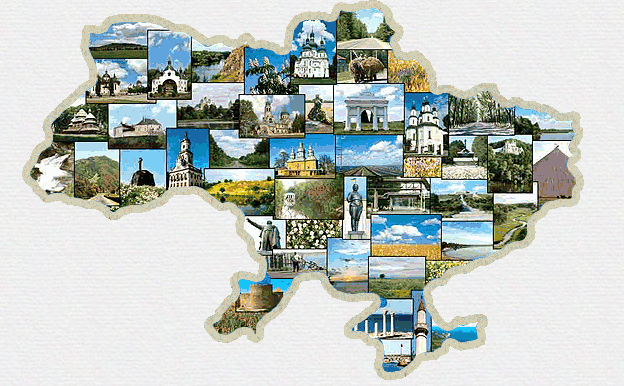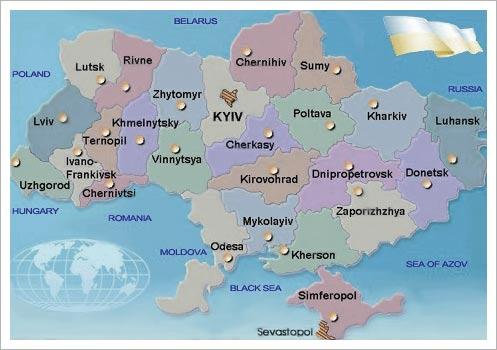
- •Ukraine
- •2. Explain the meanings of the following word combinations and use them to speak about Ukrainians:
- •3.Translate into Ukrainian and be ready to use these word combinations in your own sentences:
- •4. Fill in the blanks with the words from the list.
- •6. Look through the text again and find examples of simple verbal, compound nominal and modal verbal predicates. Present the examples to the class and give your explanation.
- •7. Decide upon the type of the predicates in the following sentences. Translate them into Ukrainian.
- •Things you should be aware of to understand Ukrainian culture.
- •9. Explain the meaning of the following words and word combinations in English and use them in your own sentences:
- •10. Find in the text the words or word combinations which have the meanings similar to these ones in the exercise, translate them into Ukrainian.
- •14. Define the type of the simple sentences. Decide whether they are two-member or one-member sentences.
- •17. In what situations would you say the following? Match these idiomatic phrases with the Ukrainian equivalents.
- •6. Match the words with their definitions to use this vocabulary in your speech.
- •11. Translate into English:
- •13. Think of a match on the left (based on the text) to appropriate definition on the right:
- •14. Fill in the blanks with the appropriate words. Change the form of the word if it is necessary.
- •16. Spelling checker. Complete the words with the missing letters:
- •22. Work in pairs. Using the material of the text “The Constitution of Ukraine” choose examples of complex sentences, analyze them.
- •3. Explain the meanings of the following words and word combinations in English and use them in the situations of your own:
- •4. English spelling is notoriously unphonetic. Some of the words can cause pronunciation difficulties. Transcribe the words with a silent letter and read them in pairs. Memorize the pronunciation.
- •9. Define the type of the predicates and translate the sentences into English.
- •3. Explain the meanings of the following words and word combinations and use them to speak about Ukraine:
- •11. Choose the right conjunctions or conjunctive adverbs from the box to finish the sentences. Explain what meaning they possess. Use them to make your own sentences speaking on Ukraine.
- •The tasks of ukraine on the way to the global
- •Integration
- •3. Explain the meanings of the following words and word combinations in English working in pairs. Use them in your own sentences:
- •4. Give English equivalent meaningful words and word combinations to the following Ukrainian ones. Work in pairs and decide upon the context in which they were used. Give examples:
- •7. Find the appropriate match for the words on the right to make phrases:
- •9. Spelling checker. Complete the words with the missing letters:
- •11. Explain the contextual meaning of the words in bold and translate the following sentences into Ukrainian.
- •14. Revise the subjunctive mood structures and define the type of the subordinate clauses in the sentences:
- •15. Use the following modal verbs to finish the sentences in their appropriate forms:
- •Self-study Box
- •5. Define the types of the subordinate clauses.
Ukraine

MODULE 6
UKRAINE OVERVIEW
WE ARE UKRAINIANS. TRADITIONS AND CUSTOMS
THE SYSTEM OF STATE POWER. THE CONSTITUTION OF UKRAINE
THE NATIONAL SYMBOLS OF UKRAINE
UKRAINE: GENERAL PROFILE
UKRAINE ON THE WAY TO THE GLOBAL INTEGRATION
UKRAINE OVERVIEW
1. Read the proverbs above. Work in pairs and discuss with your partner the ideas these proverbs bear. Present your view points.
Home sweet home.
Home is where the heart is.
There is no place like home.
2. Look at the map of Ukraine. Have you ever been to any of these parts of Ukraine? Which? Work in pairs and present as much information as you can about regions of Ukraine you’ve been to or you know about.

3. What are the values of Ukrainian people? What do Ukrainian people respect and honor? Work in pairs to discuss this point and present your opinions.
4. Do you agree that Ukraine has a lot of great people?
Work in pairs and discuss it, give your arguments.
5. Read “My Testament” written by the great Ukrainian poet T. Shevchenko. Share your opinions about the ideas expressed in the poem. Why is T. Shevchenko still remembered and honored by the people in Ukraine and all over the world?
MY TESTAMENT
When I am dead, bury me
In my beloved Ukraine,
My tomb upon a grave mound high
Amid the spreading plain,
So that the fields, the boundless steppes,
The Dnieper’s plunging shore
My eyes could see, my ears could hear
The mighty river roar.
When from Ukraine the Dnieper bears
Into the deep blue sea
The blood of foes … then will I leave
These hills and fertile fields –
I’ll leave them all and fly away
To the abode of God,
And then I’ll pray … But till that day
I nothing know of God.
Oh bury me, then rise ye up
And break your heavy chains
And water with the tyrants’ blood
The freedom you have gained.
And in the great new family,
The family of the free,
With softly spoken, kindly word
Remember also me.
6. What style does this poem belong to? Name the prosodic features of the style. Work in pairs, read the poem to each other. What do you feel when you read this poem?
WE ARE UKRAINIANS. TRADITIONS AND CUSTOMS
1. Read the text “We are Ukrainians” to get information about Ukrainian people, their traits, their national and cultural identities to be competent in further exercises and discussions.
One of the ways to get to know people is to learn about their ancient rituals and rites.
Ukrainians have always been very hospitable people. Even in the distant past they welcomed their guests with bread and salt placed on an embroidered towel – this tradition has survived up to now. Ukrainians have an acute sense of unity with the soil, sky, Universe. Probably, the fact that Ukrainians have always been predominantly farmers helped them preserve very ancient traditions in spite of all the troubles and wars of the past.
There are quite a few of folk and religious holidays that are celebrated in Ukrainian villages. Some of these celebrations are very noisy, all of them are a riot of colours, they are entrancing, leaving no one indifferent. Taking part in them is like going back in time. These holidays throw back to the times when we, humans, were like one huge family, when we enjoyed gazing into the starry sky, when we could understand the language of grasses and animals, when our voices were so strong and pure that they could be heard by God.
Quite a few people living in urban areas would like to regain some of the joys and some of the simplicity of the country life, but it is so difficult to do. Would you like to see multi-coloured Hutsul dresses? Would you like to eat foods of the traditional Ukrainian cuisine? Would you like to listen to folk songs? Would you like to gape in admiration looking at the beautiful folk art objects?
To get all this you don’t have to travel from village to village because there is a wonderful place on the outskirts of Kyiv where you can come into contact with the eternal beauty of the spirit of the Ukrainian nation. The place is called Pyrohiv. It is there that the Open-Air Museum of Folk Architecture and Ethnography is situated. To walk through the Museum is to walk, as it were, through the whole of Ukraine, Ukraine concentrated on the territory of the Museum, Ukraine of the past and of today.
The six major sections of the Museum display exhibits that represent all the major historical and ethnographical areas of Ukraine. Architectural features of the country houses, churches, schools, taverns and other buildings that have been brought to the Museum from many parts of Ukraine or built there as exact replicas of their originals reflect differences in local conditions, modes of life, artistic inclinations. Ukrainian folk culture opens to the visitor in all of its manifestations. Come to the Museum and enjoy all the marvels concentrated there.
1. What qualities are characteristic to Ukrainian people?
2. What helped Ukrainians to preserve very ancient traditions?
3. How do Ukrainians welcome their guests?
4. Where (in what museum) can one see all the major historical and ethnographical areas of Ukraine?
5. Do you think it is important to have ethnographical museums?
6. What would you say about their importance to Ukrainian people and to guests from abroad?
7. Have you ever been to the Open-Air Museum of Folk Architecture and Ethnography?
